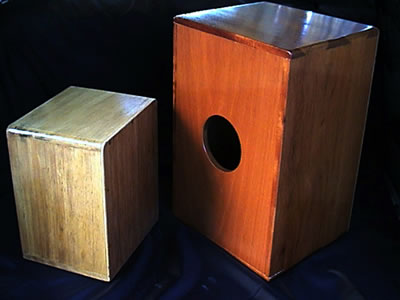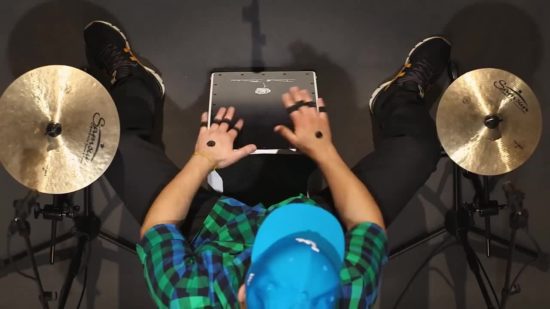Most times we see public percussion performers play a wooden box on the side of the road, and the sounds coming from the box as it is hit produces some melodic rhythm that keeps you tapping your feet and nodding your head to the groove. The instrument you are nodding to is called a cajon drum, and it is one of the unique percussion instruments you can find today. The cajon drum is made out of packing crates and is a traditional instrument used by some cultures to produce music, and it is seen on the modern platforms such as in afro, Cuban and flamenco music.
The cajon drum has risen in popularity in the modern music scene and is used by a lot of percussionists today. It is quite a portable instrument, small in size, and can be carried easily to wherever it is going to be used. The beauty of the sound of the traditional cajon drum is one that would keep playing for a long time in your head, so one can imagine how the modern variant would sound! Although the cajon drum is still a wooden box regardless of the design, and that is why a new modification came into place to ensure that the best is gotten from the hallowed instrument. These modifications are because the cajon drum is now becoming an integral part of the modern music set of instruments, especially in hip-hop, and also because of studio recording purposes.
Is the Cajon Drum Suitable for Hip Hop Music Use?
The answer is nothing but yes! The cajon drum is ideal for hip-hop music and is an excellent approximation of the conventional drum kit. Some variants of the instrument come with an additional snare drum, for versatility, fitted into the box and made from tensioned guitar strings. It offers the flexibility of sound and acrobatics that enable you to produce variations of sounds such as the deep boom of a bass drum or the pseudo-snare sound. All of these features make the cajon a very significant addition to the instrument set up for hip-hop music. If you don’t have experience with the instrument you better be prepared when looking for your best cajon drum there are numerous suitable brands and products out there, but this is beyond the scope of this article. You can also check out our friends over at sound-undsound.com for more details on various instruments if you want to expand your knowledge.
Performances of percussionists on the roadsides with cajon drum are usually just ‘out of this world’ and recording this in the open and with a low-quality microphone would not do the job. The disadvantage is that the instrument is played in public and a lot of sounds is lost to the atmosphere. So it is expedient that one uses the right equipment to record the instrument during use.
One of the rare happenings you would not want to miss is the use of the cajon drums for rap-offs and freestyles, and not to beatbox. The instrument has the mixture of the sounds required for a standard rap groove. The thud of its low end is comparable to a bass drum of a drum kit, and it is often used as a substitute bass drum in some minimal equipment gigs. The front surface of the cajon drum can be manipulated to produce diverse sounds like cross sticking, rim shots, and a realistic replica of the snare drum sound.
In some cases the cajon drum is used in the studio for recordings and using it in a studio would require a lot of skill and practice to perfect, but the most critical aspect is having a good knowledge of the instrument. A proper understanding of a musical instrument enables you to produce the required sounds from that instrument, due to the understanding of the natural sound of the instrument, tuning and how edited sounds are supposed to sound.

Editing the Cajon Drum For Recording
A properly ‘mic-ed’ cajon drum would enable you to capture all the sounds required for the mind-blowing recording you are about to engage in. The thing is, a hard surfaced room corner or platform would help you better than a padded room if you want more of a boundary effect of the walls on the sound of the drum. The reflective sound is livelier but requires more effort to edit if it is to be used for recording purposes.
After the microphones are correctly attached, the sounds from the ‘tapa’ head and the back hole are mixed. One of the microphones is flipped in polarity because the two microphones are facing each other. The low-end sound might lose tonal depth, and the music becomes vaguely usable. To match the natural sounds of the acoustic instrument, you would have to use an equalizer. Another way to get the best sound is by using the close-miking technique for the front and back surfaces and sending the signals differently for processing. A compressor is usually used with an attack time of about 10 to 20 ms to accentuate the strokes on the surfaces.
If you want to brighten the snare sound of the cajon drum, you should use a harmonic exciter or a high-shelf equalizer. The bass sound is tightened with a Transient Designer or a gate to reduce to the boom sounds. You can also reduce the boom sound by adjusting the angle of the microphone to produce a lively sound that does not need much reverb. Changing the perspective of the microphone gives an ambience treatment from a density reverb that would give the music a sense of place.










